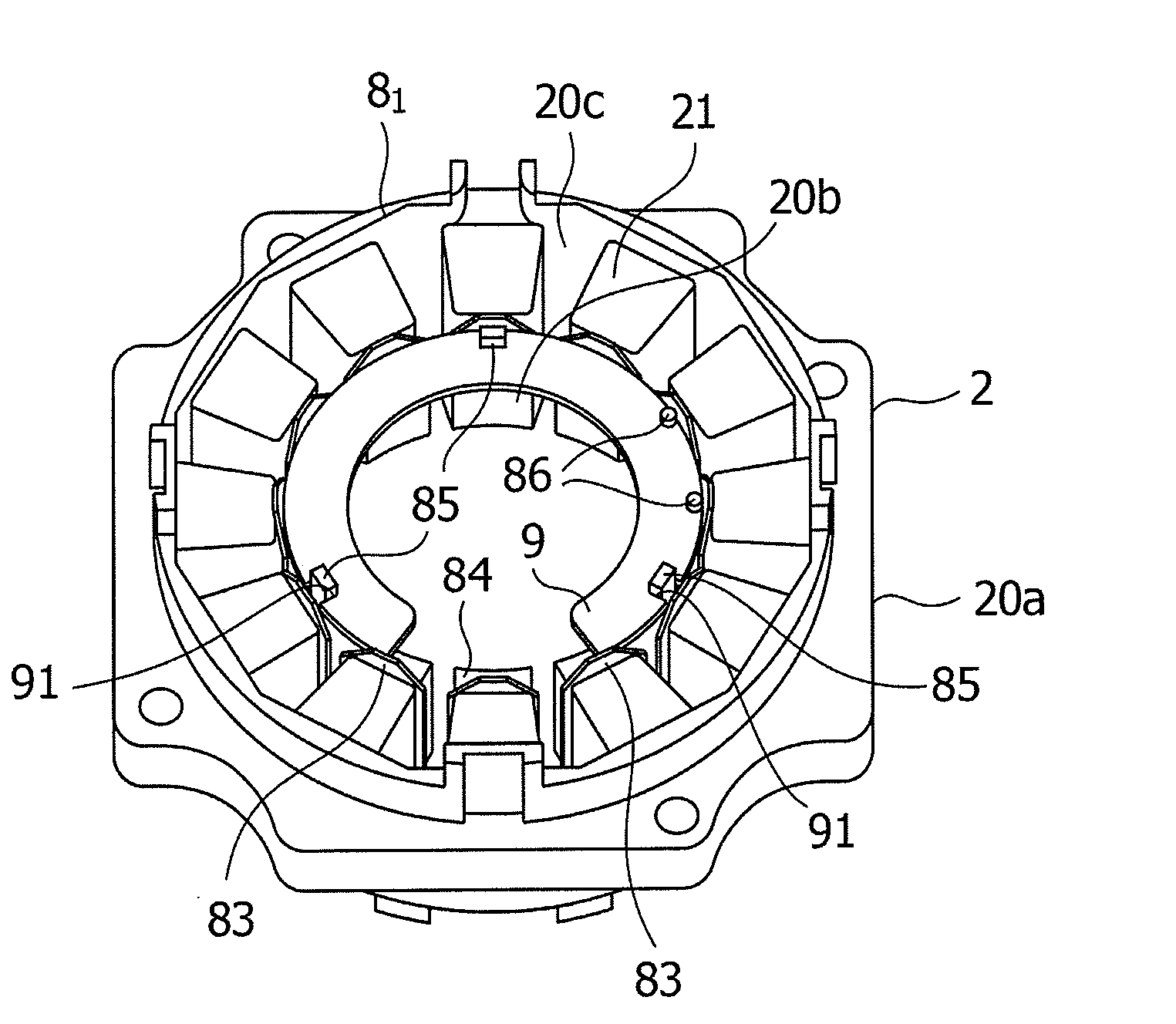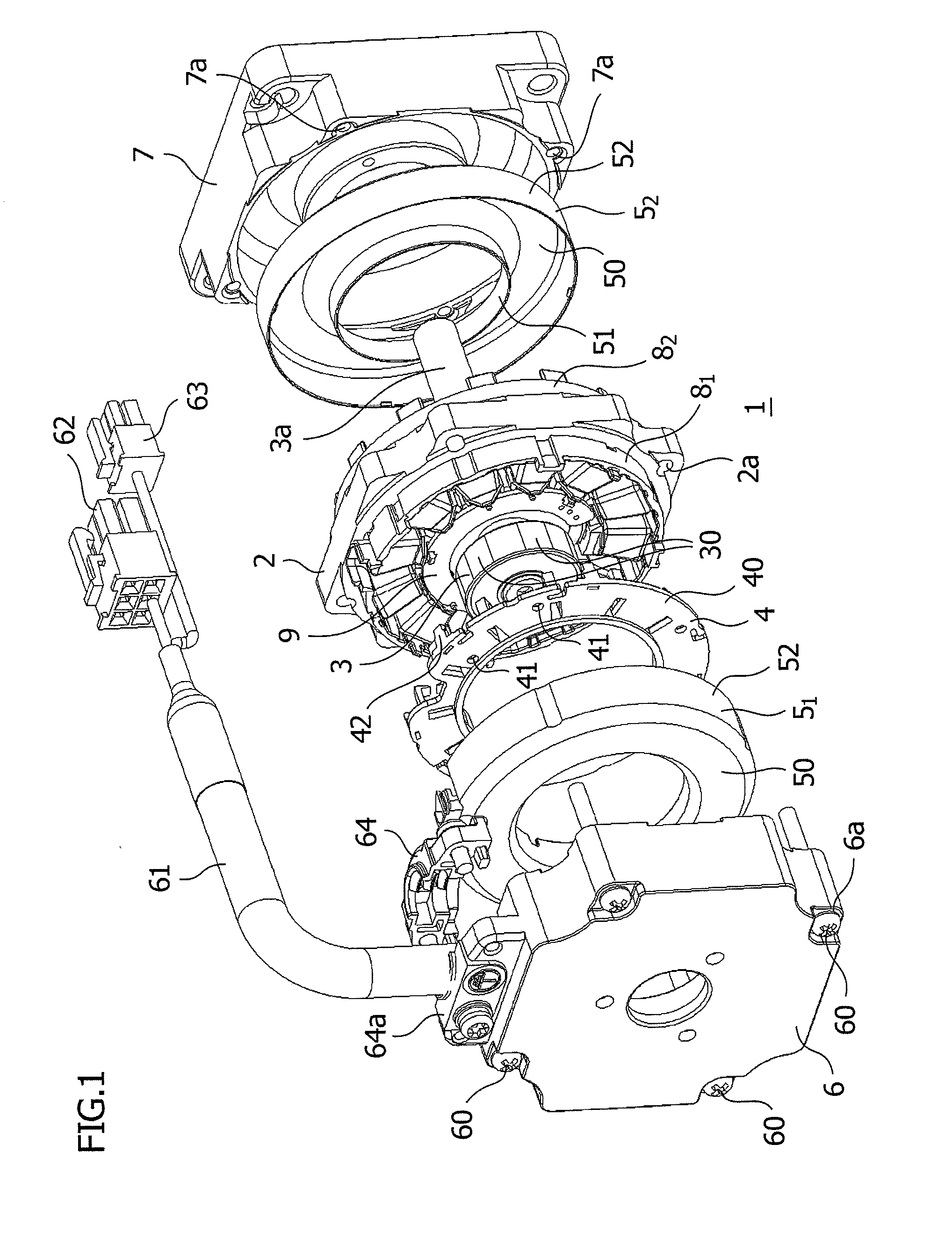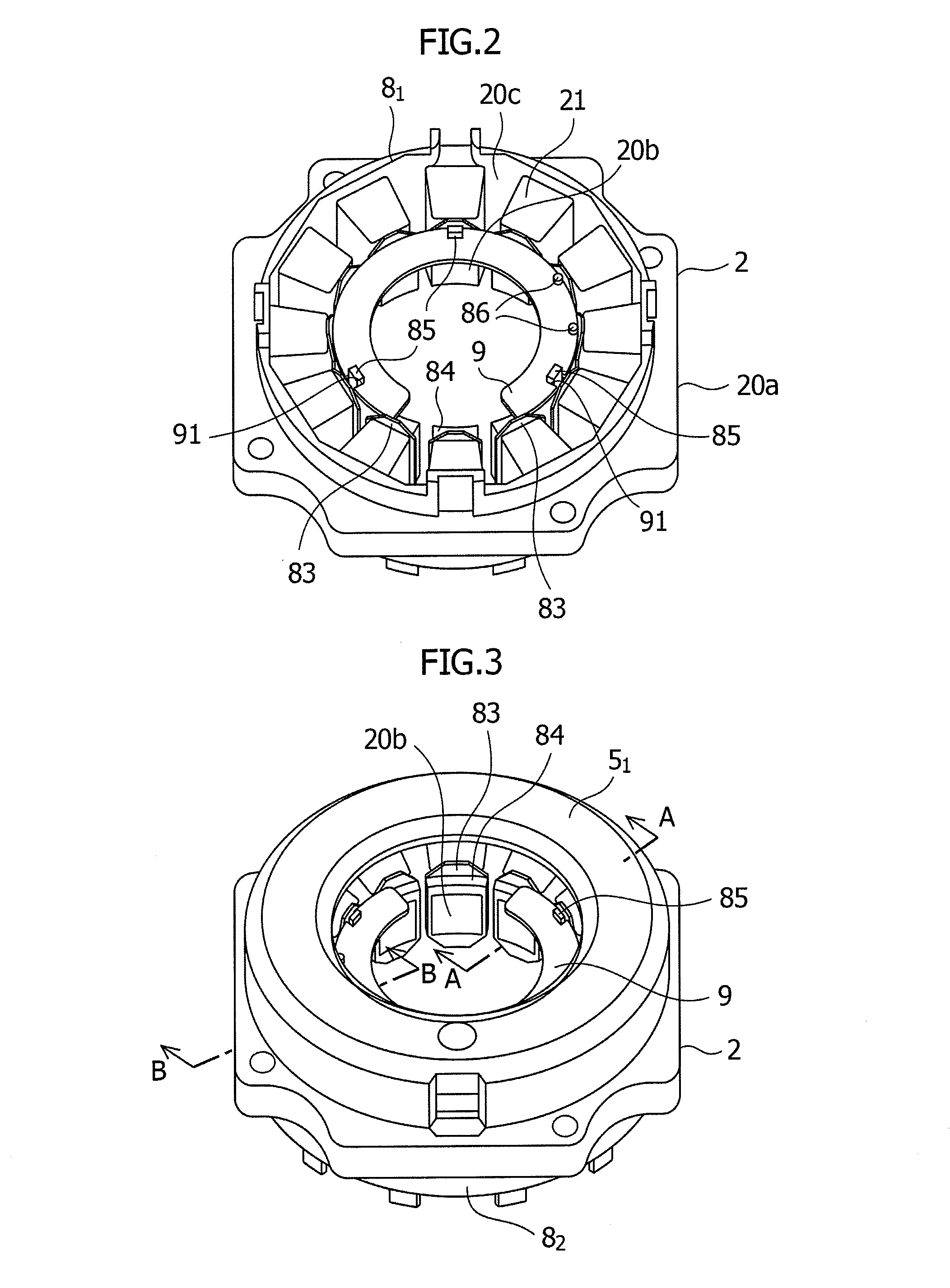Method and structure for mounting sensor substrate of brushless motor
- Summary
- Abstract
- Description
- Claims
- Application Information
AI Technical Summary
Benefits of technology
Problems solved by technology
Method used
Image
Examples
Embodiment Construction
[0024]Embodiments of the present invention will be described in detail below with reference to FIGS. 1 to 7.
[0025]Referring to FIG. 1, which is an exploded view of a brushless motor, a brushless motor 1 is constituted by a stator 2, a rotor 3 arranged on an axis of the stator 2, a lead clamping plate 4 assembled on one side of the stator 2, a pair of coil end covers 51, 52 assembled on both sides of the stator 2, and a bracket 6 and a flange 7 that are assembled on the further outside of the coil end covers 51, 52, and these components are integrally assembled. A motor case of the brushless motor 1 is constituted by the bracket 6, the flange 7, and an outer surface of the stator 2.
[0026]Referring to FIG. 2, the stator 2 of the brushless motor 1 includes pole teeth 20b formed at an inside of a yoke 20a formed on the periphery of the pole teeth 20 and including thin punched steel plates having been produced by pressing steel plates such as silicon steel plates and laminated together, ...
PUM
 Login to View More
Login to View More Abstract
Description
Claims
Application Information
 Login to View More
Login to View More - R&D
- Intellectual Property
- Life Sciences
- Materials
- Tech Scout
- Unparalleled Data Quality
- Higher Quality Content
- 60% Fewer Hallucinations
Browse by: Latest US Patents, China's latest patents, Technical Efficacy Thesaurus, Application Domain, Technology Topic, Popular Technical Reports.
© 2025 PatSnap. All rights reserved.Legal|Privacy policy|Modern Slavery Act Transparency Statement|Sitemap|About US| Contact US: help@patsnap.com



